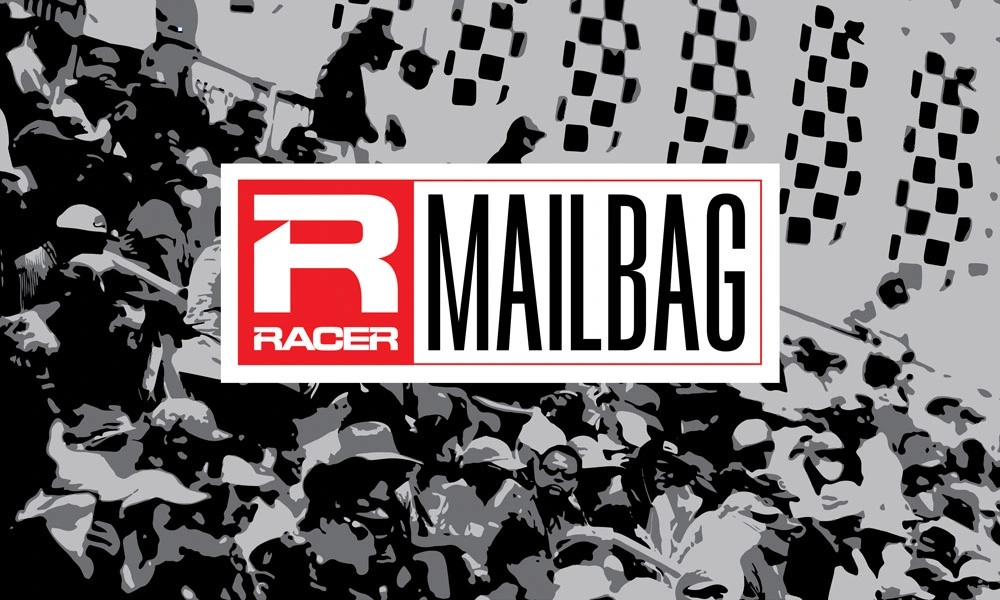Q: For decades, I’ve heard it said that on superspeedways IndyCars corner at speeds too high for human reactions to exert real car control. Bourdais’ 2017 Indy crash would tend to confirm that. But I saw Sato get squirrely in Turn 2 there last year, and he gathered it up. Was he just lucky? What’s the truth today?
Anthony Valdettaro, Indianapolis, IN
MP: It’s not too fast but it’s close, and as drivers have told us, a lot of what they do while rocketing through a corner at 235-240mph involves prediction. Their backsides feel the faintest twitch from the rear of the car, and they’re feeding a millimeter or two of opposite lock into the steering wheel because by the time that miniscule amount of oversteer arrives, it would be too late to correct it if they waited for the car to truly slew sideways.
I’ve been doing this for almost my entire adult life, but I’ve never lost sight of how extraordinary the top Indy 500 drivers happen to be. Perfect example was last week at the Indy Open Test. Newgarden had just posted his test-leading lap, climbed out of the car at the end of the day, and I still look at him and others like him and think, “You were just doing 240mph, and minutes later, you’re standing here, talking to us, as a normal human being. How is that possible?” I can’t fathom how their minds process warp speeds, their hands and feet and eyes move almost as fast as the car to keep it under control, and then they hop out and can speak intelligible words to us. I’d be drooling or curled up in the fetal position afterwards. There’s nothing like it in sports.
Q: I noticed in the IMSA race at Long Beach the AO Racing Porsche and Racer’s Edge Acura never did start the race. I presumed the two teams could not fix their cars in time after crashing in qualifying. That Porsche looked absolutely smashed up. In that scenario, what are some of the things teams take into consideration when deciding whether to fix the cars in the paddock or pack up and head home? While on the subject, how often in your mechanic career have you helped a team in an overnight thrash to fix a car, and was there one that you remember the most?
Brandon Karsten
MP: For production-based GT cars like the Acura and Porsche, it would be a bent chassis or a lack of spare parts that keeps a car from making the next session or the race altogether. I can also recall one scenario at Long Beach where a GT team suffered a huge crash the day before the race, and while they had the money and resources to have the chassis straightened, they didn’t want to go through all of that effort to risk racing a car that might not be truly straight with a busy stretch of racing coming up in the months ahead, so they chose to pack up, return to their shop, and get a head start on proper repairs in a proper environment.
The one from my own career that jumps out was the last one when my little factory Scion endurance racing team went into the 25 Hours of Thunderhill in 2008 with a freshly-painted tC done with a full AAR IMSA GTO Toyota Celica livery — with graphics done by the same company that did them for AAR in the 1980s — and had one of my drivers, a solid SCCA World Challenge pilot, barrel roll the thing at the fastest corner in testing the day before qualifying.
We didn’t get much sleep, but we did manage to scavenge all kinds of things from a local wrecking yard and spray painted as much as we could to make it look less like a Frankenstein car. Funny part was when I had whatever mobile windshield repair company — Safelite or something like that — show up at a racetrack to try and fit a new windshield after we spent hours hammering and bashing the crumpled corners of the a-pillars and roof back into place so the windshield would fit. The guy ended up using a lot of sealant to fill the gaps.
My crew were absolutely invaluable and filled with determination to take this once-pristine Scion tC and get it back in running order with all kinds of new bodywork, suspension, and ancillaries in the engine bay. Ended up placing third in class and won $1000 for our effort, which went to them for being amazing.

Q: A year ago or so, you wrote that Don Cusick was wanting to start a new IndyCar team but wanted to wait for the new engine. Is that still a possibility, or has he had a change of mind and only wants to sponsor cars for the Indy 500?
Paul, Indianapolis
MP: Great question. As I understand the situation, it’s somewhat open for Don. Would he be up for buying all the equipment and running a standalone team? Yes. Would he be up for buying into a team and functioning as a true partner? Yes. The part that isn’t up for debate is how Cusick has limited interest in being a non-equity guy who brings all the funding to a team and leaves after the race with nothing but memories. I’d say that if the relationship with Dennis Reinbold continues heading in the right direction — and Reinbold’s a quality person and businessman — I could see something more formal come to fruition.
